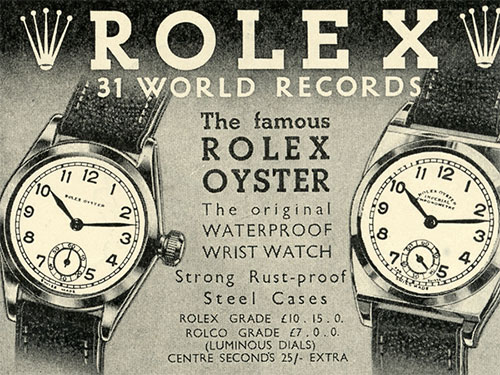
What is an “Original” Rolex? Were they the first models sold by the company? Perhaps they are the models that were first given the Rolex trademark and brand name? Or perhaps they were the first models that were designed and assembled by Rolex themselves.
As a brand, Rolex isn’t one of those companies that have a clearly defined point of origin for their products. When we are talking about the first or original Rolex wristwatch, we first need to define which period of the company’s history we are talking about.
To help you to better define which period in time you might want to consider as being when the “original” Rolex watches were made, here is a brief outlay of the production history of the Rolex brand.
You may also be interested to read the Top Vintage Rolex Watches and Their Prices Article.
In the Beginning
Like so many other iconic brands out there, Rolex also has a rather humble beginning. In 1905, Hans Wilsdorf and his brother-in-law Alfred Davis established their business, Wilsdorf & Davis, in London’s Hatton Garden.
Functioning as a watch importing business, Wilsdorf & Davis sold wristwatches that were imported from Switzerland, during a time when wristwatches, or wristlets, were considered to be more of a lady’s fashion piece, and pocket watches were the only acceptable way for a man to tell the time.
Not all of the pieces they sold carried their own original branding which allowed them to brand the watches with their own Wilsdorf & Davis or W&D markings.
When Was the Rolex Trademark First Used?
One of their top-of-the-line pieces came from the Swiss manufacturer, Aegler. When Wilsdorf & Davis first established the business, they placed the largest order that Aegler had ever seen, enabling the two companies to form a relationship that had lasted the test of time.
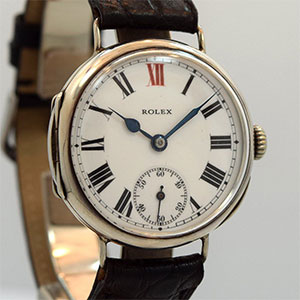
Value (FMV) $15,000 USD
So strong were their business dealings, that when Wilsdorf registered the name Rolex in 1908 and requested that Aegler re-brand the watches that they were supplying them with the new trademark, Aegler complied, even if reluctant at first.
Thus making the earliest known watches to carry the Rolex trademark, to be Aegler built models from 1908.
When Did the Brand Name Get Recognition?
If the simple act of slapping the Rolex trademark onto already preexisting wristwatch designs, is not enough to define the “original” Rolex wristwatches for you, then what about their world-first achievements?
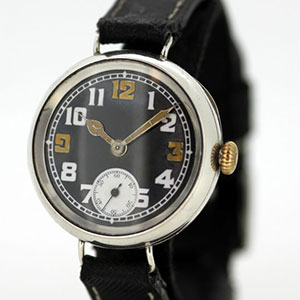
Value (FMV) $2,300 USD
Rolex is known for being the brand that produced the first wristwatch to be given a First Class Chronometer Certificate, and for spurring on the men’s wristwatch fashion industry. So surely this must be the “original” Rolex wristwatch, right?
What if we told you that the wristwatch that Wildorf submitted for testing with the Bienne rating office in Switzerland, and was awarded a First Class Chronometer Certificate, was still a model produced by Aegler?
Wilsdorf understood the power of branding, and even though the watch wasn’t branded with the Rolex trademark, and the certificate made no mention of the brand; Wilsdorf nevertheless took this opportunity to declare the watch to be the very first Rolex Chronometer.
Four years later in 1914, Wilsdorf submitted yet another Aegler-built ladies model for further testing. This time the Rolex trademark was clearly visible on the watch’s face dial and was submitted for testing with the Kew Observatory in the U.K., becoming the first watch to ever receive a Class A Chronometer Certificate; something that only had been previously awarded to marine chronometers.
Taking advantage of the 1910 and 1914 certifications, Wilsdorf set about building the reputation of the Rolex brand, as being one of the finest and most well-crafted wristwatch makers in the world.
When Was an Exclusivity Deal Made?
During the 1920s, Aegler and Rolex had built up such a strong business relationship with each other, that they even held shares in one another’s business around this time. It would be at this point that Rolex first began to become involved in the manufacturing process, and the assembly of their own watches.
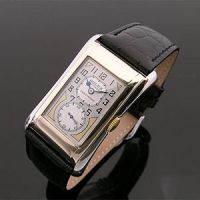
Value (FMV) $12,000 USD
By 1930, an exclusivity deal was struck between Aegler and Rolex. With the exception of casing and bands, both companies came to an agreement that Rolex would only source their components from Aegler, and Aegler would exclusively supply Rolex.
Simply put, before the 1930s, Aegler was technically free to provide other clients with the same watch models that they were re-branding for Rolex. By signing their agreement, the models that were produced for Rolex were now exclusively Rolex wristwatch models.
When Did They Produce Their Own Watches In-House?
Despite their 100 year history of working together, it would not be until 2004 that Rolex and Aegler would form a single company, producing virtually all elements of their watches in-house. As Aegler was there from the very beginning, it was only fitting that they would eventually be acquired by the Rolex company, making the brand truly whole.
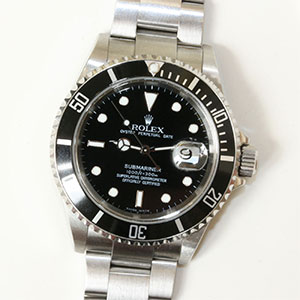
Value (FMV) $8,500 USD
When Patrick Heiniger took over the role of CEO in 1992, he embarked on a quest to bring all of the companies subcontractors under the control of the Rolex company, moving all production and assembly to one of four locations.
The first company that Rolex acquired, was its largest case maker, Genex. Over the next few years, they would continue to acquire more and more of their subcontractors, Gay Frères, Beyeler, and Boninchi, were all acquired, allowing Rolex a greater control over the smelting and manufacturing process of most of their components.
In March of 2004, when Rolex acquired Aegler in a reported $1bn deal, Rolex was finally able to have full in-house control over every element of the manufacturing and assembly process of their watches. Since then, with the exception of the synthetic sapphire crystals and some of the dial hands, almost every single component found in a Rolex made after 2004, has been designed, manufactured and assembled by Rolex themselves.
Final Thoughts
Rolex is the epitome of fine craftsmanship and elegance. Rolex the company and brand, are very different today, compared to their humble beginnings. From the start, the Hans Wilsdorf and Alfred Davis family have been working alongside the Swiss Aegler company. Together, they produced some of the world’s finest watches and worked with each other, to develop the Rolex brand into what it is today.
So regardless of where you may stand with regards to what defines an original Rolex; without the journey that both companies took together, we would not have the timeless collection pieces that we have today.
Leave a Reply